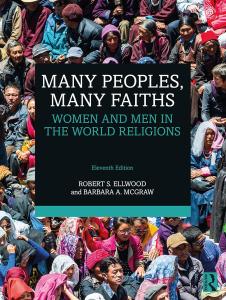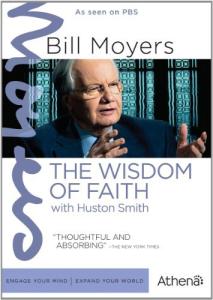The fabric of human spirituality is adorned with myriad religions, each a singular manifestation of humankind’s quest for significance, for destiny, for union with the transcendent. To know this mosaic well, to see how it fits together, is to understand why we must approach the world’s religions not as competing sets of ideas but as many paths — different manifestations of humanity’s manifold experience of (or experience in the absence of) the divine. The scholarly study of these belief systems, known as Religious Studies (or sometimes Comparative Religion), offers a guide for this investigation.
Although there were innumerable minor religions and tribal religions around the world, a few major traditions a a good starting point. These consist of:
Abrahamic Religions
This family of monotheistic faiths shares a common ancestor in Abraham (Ibrahim) and a focus on a singular, personal God. The three main branches are:
* Judaism: The earliest of the Abrahamic faiths, focuses on the covenant between God and the Jewish people, stressing ethical monotheism, adherence to Jewish law (Halakha), and the anticipation of a messianic era. Central texts are The Torah (the first five books of the Hebrew Bible) and The Talmud.
* Christianity: Emanating from Judaism in the first century CE, Christianity focuses on the life and teachings of Jesus Christ, the Son of God and Messiah. Within it are divisions such as Catholicism, Protestantism, and Eastern Orthodoxy, each with its interpretations of scripture and theology. The Bible is the core scripture.
* Islam: Initiated by the Prophet Muhammad during the 7th century CE, Islam prioritizes an uncompromising belief in the unity of God (Allah) and submission to his command. Its primary texts are The Quran (Koran), the word of God as revealed to Muhammad, and The Hadith, which narrate the Prophet’s words and deeds. The religion has Sunni and Shia sects among others.
Eastern Religions
These faiths, which come from mostly Asian backgrounds, tend to focus on spiritual insight, cyclical time, and interconnectedness. Notable examples are:
* Hinduism: Among the most ancient, Hinduism is characterized by a multitude of beliefs and practices, including diverse deities, philosophies (such as Vedanta and Samkhya), and paths to spiritual liberation (moksha). Important scriptures include the Vedas, Upanishads, and Bhagavad Gita.
* Buddhism: Founded by Siddhartha Gautama (the Buddha) in ancient India, Buddhism focuses on overcoming suffering through practices such as meditation, mindfulness, and ethical conduct. There are various branches of Buddhism, including Theravada and Mahayana. Important scriptures include The Sutras and The Tripitaka.
* Jainism: An ancient Indian faith of non-injury and asceticism in pursuit of deliverance. Jainism advocates strict vegetarianism and non-violence.
* Sikhism: A monotheistic religion originating in the Punjab region of India, Sikhism preaches the unity of God and the equality of all people. Central scriptures are The Guru Granth Sahib, a compilation of hymns and writings from Sikh gurus.
* Confucianism: Confucianism stresses social harmony, filial piety, and good governance. Essential writings are The Analects of Confucius.
* Taoism (Daoism): Focused on living in harmony with the Tao (the natural order), Taoism encourages simplicity, introspection, and acceptance of the natural flow of life. Tao Te Ching is the key text.
Indigenous Religions
Many indigenous cultures around the world have active spiritual traditions tied to their native practices and customs. These religions often incorporate elements of animism, ancestor worship, and a strong connection to nature. These traditions are frequently documented based on oral histories and ethnographic studies.
The Study of Religion: Religious Studies
Religious Studies employs an interdisciplinary approach, drawing on history, anthropology, sociology, psychology, philosophy, and linguistics to analyze various aspects of religious phenomena. It aims to understand:
* Religious Beliefs: Examining the core tenets, doctrines, and worldviews of various faiths.
* Religious Practices: Analyzing rituals, ceremonies, and devotional acts.
* Religious Institutions: Studying the organizational structures, leadership, and social roles of religious groups.
* Religious Experience: Exploring the subjective, personal encounters individuals have with the divine or the sacred.
* Religious History: Tracing the development and evolution of religious traditions over time.
* Religion’s Social and Political Impacts: Analyzing the influence of religion on culture, society, and political systems.
Methods of Religious Studies
Scholars employ methods such as:
* Theological Studies: Examining religious beliefs from within a particular faith tradition.
* Historical-Critical Study: This involves examining religious texts and traditions in their historical and cultural context.
* Anthropological Studies of Religion: Mining religion for social and cultural insights.
* Sociological Studies of Religion: Analyzing the community and social aspects of religious organizations.
* Phenomenology of Religion: A concentration on the religion itself as experienced by practitioners.
Conclusion
By employing rigorous and critical methods, it is essential to note that the discipline of Religious Studies is about witnessing and comprehending, rather than promoting or disproving. The ultimate goal of Religious Studies is to illuminate the human condition through the lens of religion
World Religions: The Great Faiths Explored and Explained
by John Bowker
Product information
Product Review Score
4.28 out of 5 stars
188 reviews






